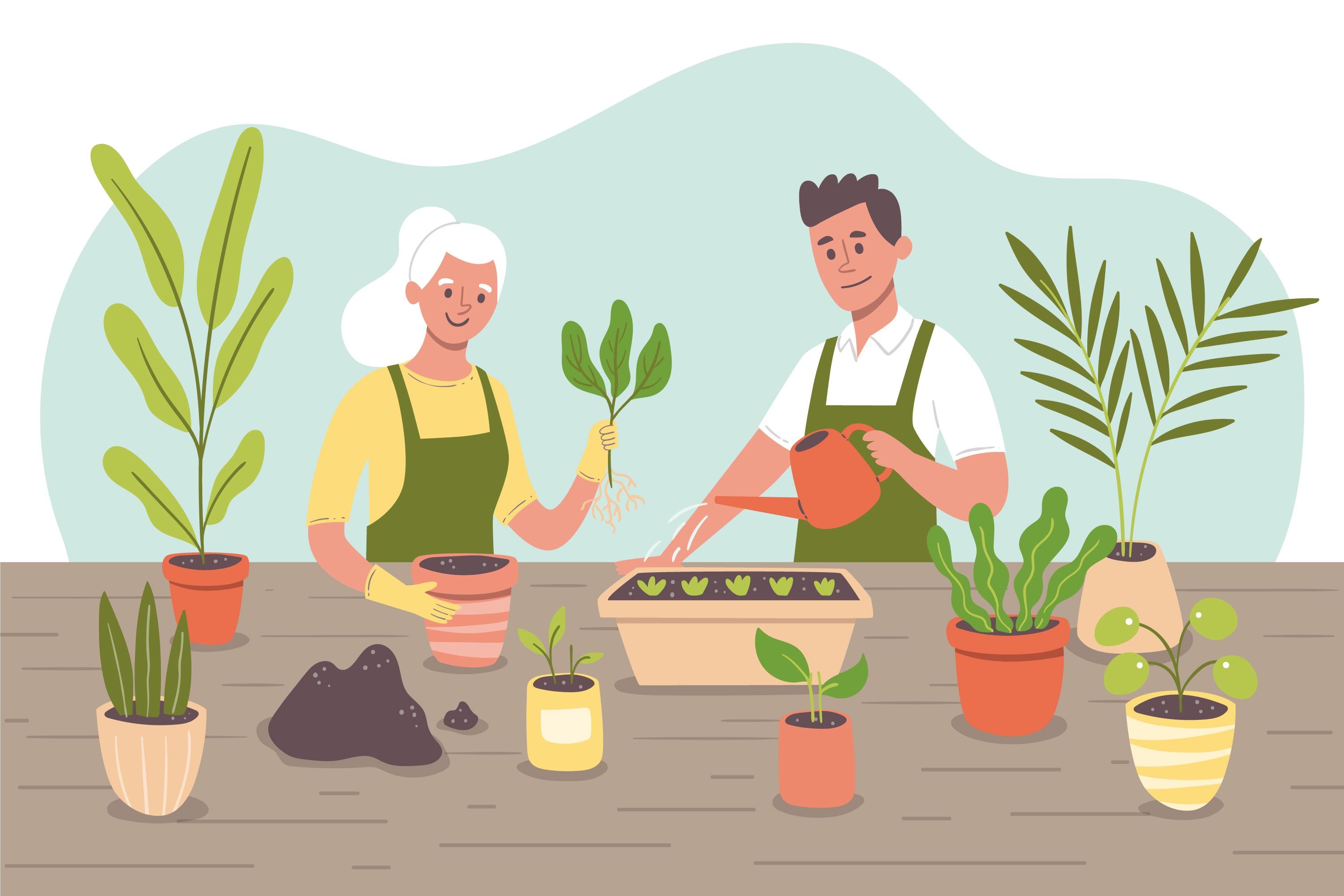The Ultimate Overview to Horticulture: Cultivating a Dynamic and Growing Outside Paradise
Are you all set to transform your exterior area into a prospering and dynamic paradise? Look no more! In this utmost overview to gardening, we will reveal you whatever you require to recognize. Discover the vital tools, pick the ideal plants, prepare and preserve your dirt, master watering and fertilizing strategies, and keep pests and diseases at bay. Get ready to unleash your environment-friendly thumb and produce a magnificent yard that will leave every person amazed. Let's start!
Vital Devices for Gardening
To efficiently keep your garden, you will certainly need to furnish on your own with a variety of essential tools for gardening. These tools are important in ensuring that your plants grow and your yard remains in beautiful condition. The very first tool you will need is a strong pair of horticulture gloves. These handwear covers will shield your hands from thorns, sharp objects, and dirt, enabling you to function comfortably and securely. One more important device is a sturdy trowel. This handheld tool is excellent for excavating small openings, transplanting seed startings, and eliminating weeds. Additionally, a great set of trimming shears is vital for trimming and forming your plants. These shears will certainly assist you maintain the health and wellness and look of your yard. A reputable watering can or pipe is additionally needed to guarantee that your plants receive the correct amount of water. Last but not least, purchasing a top quality yard fork will make it simpler for you to loosen the soil and remove any debris. By having these vital devices at hand, you will certainly be well-prepared to tackle any kind of horticulture job and develop an attractive outside heaven.
Selecting the Right Plant Kingdoms for Your Garden
When intending your garden, it is crucial to very carefully choose the appropriate plants for optimum growth and beauty. Selecting the right plants can make all the distinction in creating a growing and lively outside paradise. There are a number of factors to take into consideration when making a decision which plants to include in your yard.
Firstly, you need to analyze the quantity of sunshine your garden obtains. Various plants have differing light demands, and it is important to match them with the readily available sunshine. Some plants flourish completely sunlight, while others choose partial color or full shade. By recognizing the light conditions in your yard, you can pick plants that will certainly prosper in that certain setting.
Secondly, consider the environment and climate patterns in your location. Specific plants are better matched to particular environments, and it is crucial to pick plants that are adjusted to your region. This will certainly make sure that they can endure the temperature level extremes and various other ecological problems that your garden might experience.
In addition, think of the dirt kind and fertility of your yard. Some plants like well-draining soil, while others thrive in clay or sandy dirt. Conduct a dirt examination to establish its pH degree and nutrient content. This will certainly help you select plants that work with your dirt conditions and avoid losing time and cash on plants that may battle to grow.
Lastly, consider your individual choices and the total style of your garden - newbie gardening. Choose plants that match each other in regards to dimension, structure, and shade. Create a balanced and natural look by choosing a variety of plants with different elevations and types
Dirt Prep Work and Maintenance
To make certain ideal growth and wellness for your selected plants, it is vital to properly prepare and preserve the soil in your garden. Dirt preparation is the initial step in the direction of developing a thriving outdoor heaven. Begin by getting rid of any kind of weeds, rocks, or particles from the location. Loosen the dirt making use of a yard fork or tiller, separating any clumps and developing a penalty, crumbly structure. This will certainly allow roots to discover this penetrate easily and access crucial nutrients.
Next, improve the soil by adding raw material such as garden compost, well-rotted manure, or fallen leave mold and mildew. These materials improve soil framework, water retention, and nutrient material. Spread a 2 to 4-inch layer of raw material over the dirt and mix it in completely.
Mulching helps save wetness, suppress weeds, and regulate dirt temperature level. Use a layer of natural compost, such as timber chips or straw, around your plants.

Proper soil prep work and upkeep will certainly lay the foundation for a vibrant and flourishing yard. Make the effort to care for your dirt, and you'll be rewarded with healthy and balanced, flourishing plants.

Watering and Fertilizing Methods
Maintaining the optimum moisture degrees and vitamins and mineral equilibrium in your garden is essential for the health and wellness and vitality of your plants. It's essential to strike a balance when it comes to watering. Too little water can cause your plants to pass away and wither, while way too much water can bring about root rot and other concerns. The key is to water deeply and infrequently. This encourages the roots to grow much deeper right into the soil, making your plants more resistant and much less based on constant watering.
To determine when to water your plants, inspect the soil wetness degree by sticking your finger regarding an inch into the soil. It's time to water if it feels completely dry. When watering, aim to completely damp the dirt and make certain that water reaches the origin zone. Stay clear of sprinkling the vegetation, as this can advertise illness.
In addition to watering, feeding is crucial for offering your plants with the important nutrients they need to thrive. It's essential to select the best plant food for your specific plants and adhere to the guidelines for application rates. On a regular basis inspecting the nutrient degrees in your soil and adjusting your feeding routine as necessary will make sure that your plants get the ideal nutrients at the right time.
Bug Control and Disease Prevention
Protecting your garden from pests and conditions is essential for ensuring the wellness and longevity of your plants. Insects such as pests, snails, and rats can unleash havoc on your garden, destroying leaves, flowers, and even the roots of your plants.

An additional important step is to select disease-resistant plant selections and practice buddy growing. By picking plants that are naturally resistant to usual illness in your location, you can decrease the threat of infection (newbie gardening). Additionally, planting specific types with each other can aid fend off bugs or bring in advantageous bugs that exploit parasites, providing a natural form of insect control
Moreover, keeping correct yard treatment techniques can additionally add to pest and disease prevention. This includes adequate watering, proper fertilization, and offering sufficient sunlight and air circulation. Strong, healthy plants are much less vulnerable to illness and bugs, so it is crucial to meet their basic requirements.
Finally, take into consideration using organic and eco-friendly techniques for pest control and condition avoidance. read this post here Chemical pesticides can damage valuable pests and pollinators, in addition to pollute the dirt and water. Instead, decide for natural alternatives such as organic control representatives, like ladybugs or nematodes, or homemade solutions like garlic spray or vinegar options.
Conclusion
So there you have it, the best overview to gardening! With the right devices, plant selection, soil preparation, sprinkling techniques, and bug control, you can create a flourishing and vibrant exterior heaven.
Specific plants are better fit to specific climates, and it is crucial to choose plants that are adapted to your area. Some plants favor well-draining soil, while others prosper in clay or sandy dirt.To ensure ideal development and wellness for your chosen plants, it is necessary to properly prepare and preserve the dirt in your yard.To identify when to water your plants, examine the dirt dampness level by sticking your finger about an inch right into the soil. With the right tools, plant selection, soil preparation, see here now watering strategies, and bug control, you can produce a prospering and vivid outdoor paradise.